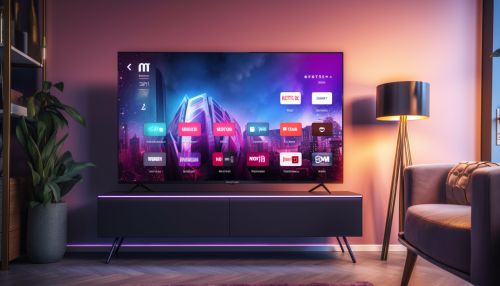Television
History
Television, as we know it today, is the result of a series of technological advancements and innovations that span over a century. The concept of transmitting images over a distance was first proposed by George Carey in 1877, but it was not until 1927 that Philo Farnsworth, an American inventor, made the first successful demonstration of a fully electronic television system.
The first television systems were mechanical and used rotating disks to scan an image. These were soon replaced by electronic systems that used a cathode ray tube to display images. The first electronic television sets were large, expensive, and produced black and white images.
In the 1950s, color television was introduced, and by the 1960s, it had become widely available. The transition from black and white to color television was a major milestone in the history of television. It not only improved the viewing experience but also led to significant changes in television programming and advertising.


Technology
Television technology has evolved significantly since its inception. The early mechanical systems were replaced by electronic systems, and these in turn have been replaced by digital systems. Today, most televisions use digital technology, which offers superior image quality and more programming options than analog systems.
The key component of a television is the display, which is where the images are viewed. The most common types of displays used in televisions are liquid crystal displays (LCDs) and light-emitting diodes (LEDs). These displays use different technologies to produce images, but both offer high resolution and excellent color accuracy.
Another important component of a television is the tuner, which receives the television signals and converts them into images and sound. There are different types of tuners for different types of television signals, including analog, digital, and satellite signals.
Programming
Television programming refers to the content that is broadcast on television. This includes a wide variety of content, such as news, sports, dramas, comedies, documentaries, and more. Television programming is produced by both public and private broadcasters, and it is often funded by advertising revenue.
The content of television programming varies greatly from country to country, reflecting the cultural, social, and political differences of each nation. In many countries, there are regulations in place to ensure that television programming is balanced and diverse, and that it serves the public interest.


Impact
Television has had a profound impact on society. It has changed the way we receive information and entertainment, and it has influenced our perceptions and attitudes towards various issues.
One of the most significant impacts of television is its role in the dissemination of news. Television news broadcasts have the ability to reach millions of people simultaneously, making it an extremely powerful tool for shaping public opinion.
Television has also played a crucial role in the globalization of culture. Through television, people around the world have been exposed to different cultures and ideas, leading to a greater understanding and acceptance of cultural diversity.
Future
The future of television is likely to be shaped by technological advancements and changes in viewing habits. The rise of the internet and digital technology has already led to significant changes in the way we watch television.
Streaming services like Netflix and Amazon Prime have become increasingly popular, offering viewers the ability to watch what they want, when they want. This has led to a shift away from traditional television broadcasting towards on-demand viewing.
In terms of technology, advances in display technology are likely to continue to improve the quality of television images. There is also ongoing research into new ways of delivering television content, such as through virtual reality and augmented reality.


